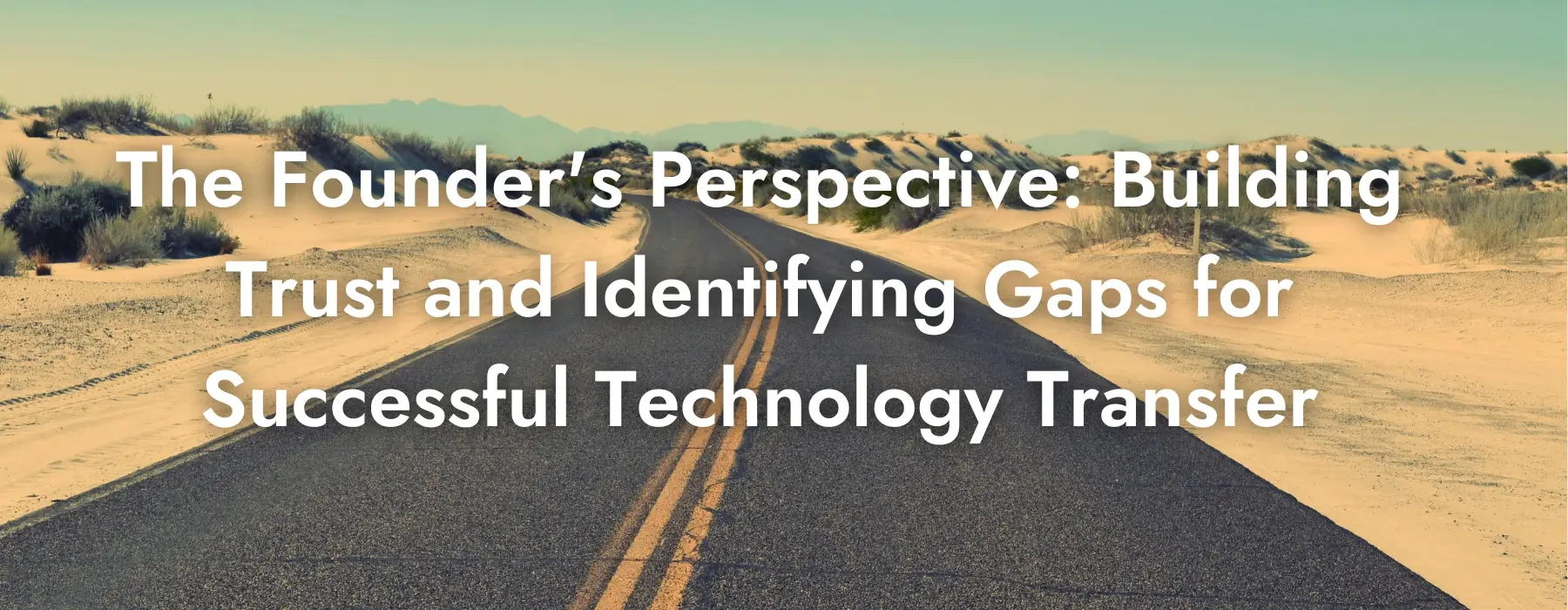The Founder’s Perspective: Building Trust and Identifying Gaps for Successful Technology Transfer
From my experience as a biotech startup founder, the technology transfer (TT) process involves due diligence and relationship building with the principal investigator (PI) and lab members, the Tech Transfer Office (TTO), Or an incubator’s management team. Most times, things don’t go as smoothly as expected, and this article will focus on what can be done in advance to avoid or minimize the gaps. Remember: Both sides of the tech transfer share the same goal of drug/therapy/product development at best! The main pillars for a successful TT are:
- Get prepared and learn all the details
- Maintain a respectful attitude
- Employ critical thinking
- Come with humbleness
Technology Transfer (TT) is done after a deal or agreement is set. The process can be divided into three main parts:
- Before the tech transfer
- The tech transfer process
- Ongoing relationships during the development journey
1. Before the tech transfer process
The goal is to evaluate gaps, raise questions, and look for data inconsistencies or contradictions in the literature. Prepare thoroughly based on literature, the web, AI tools, and the licensing agreement.
- Read the licensing agreement carefully. Understand your duties and responsibilities
- Evaluate the IP
- Delve into the literature
Approach the Principal Investigator while CCing the TT representative, legal representative, and one board member of the company. Write an engaging intro email and set up an intro meeting. Tailor the TT visit agenda, map the topics and relevant people to meet, and build the schedule with the Principal Investigator or Lab research associate. Allocate time for your presentation and self-introduction, the first cornerstone of building trust. Don’t come alone. Bring a team member, consultant, or an unbiased person proficient in TT. Here is the agenda I prepared for the TT from UCLA lab.
Visit:
2. The tech transfer process
Goal: Build trust and rewrite the strategy and development plan based on the tech transfer.
Now that the visit agenda is ready, get super prepared and navigate the schedule professionally while applying the following pillars: Documentation and organization, transparency, and trust.
Building trust with power skills: Respect the work done, the findings, and the efforts behind them. Come humbly, ask questions, listen, and remember that this interaction is for the long-term, and relationship building is essential. Avoid “educating” the lab members. Process what can be done and what can’t, and to what extent.
It is essential to list the responsibilities of each party and prepare an agenda for the visit in advance. Talk with those who practically did the work. Ask for every detail.
Communicate mainly about what didn’t work since this precious knowledge is hidden and can save you time and effort in your development endeavors.
Document every piece of data that needs to be sorted out further. Create a “live” document of the topics covered, gaps, and things to fill.
Zoom out and re-evaluate your development plan, strategy, and milestones. If major gaps are found–rewrite the strategy and development plan, find creative solutions, and adapt the budget plan for needed tasks. Prepare a summary document or presentation and communicate it with the Board of Directors.
You are ready to go!
3. Ongoing relationships during the development journey
Goal: joined collaboration for fruitful processes–take proactive actions to keep the interaction alive:
- Set periodic update meetings but be aware of IP generated and their contribution within the limitations of the academic institute and the licensing agreement.
- Share information of interest related to the field with the PI and associate researcher, such as publications, deals, companies, and market trends.
- Consider writing a joint paper or grant.
- Ask the PI for relevant contact KOL persons in the field: physicians, clinicians, organizations, etc.
- Optional: Get the lab members involved but remember each party’s responsibilities and the differences between academia and industry
In summary, successful technology transfer requires thorough preparation, a respectful attitude, critical thinking, and humility. By evaluating gaps, raising questions, and building trust through transparency and effective communication, founders can bridge the gap between academia and industry. The key is maintaining an ongoing relationship, sharing insights, considering collaborative opportunities, and remembering that both parties aim to advance drug, therapy, or product development.

Subscribe Now to the Bio-Startup Standard
Notify me for the next issue!



